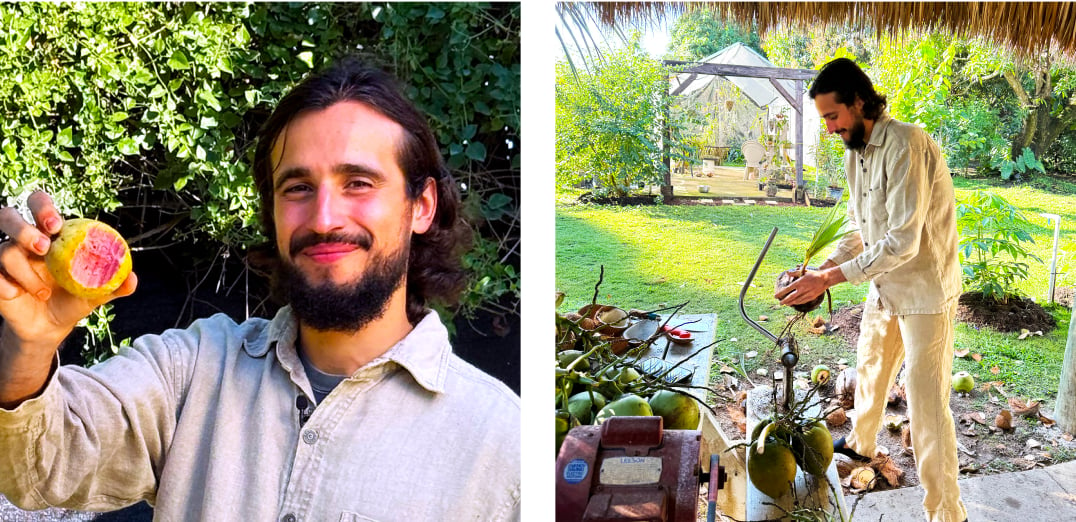Articles
A Celebration of Citrus
A famous Florida citrus slogan once touted, “A day without orange juice is like a day without sunshine.” This category of fruit reaches its peak freshness in winter, making them a great addition to your juices, smoothies, and plant-based milk drinks.
Let's explore the wide range of citrus, discover how to choose the best ones, learn their health benefits, and craft exceptional drinks for this month and beyond.
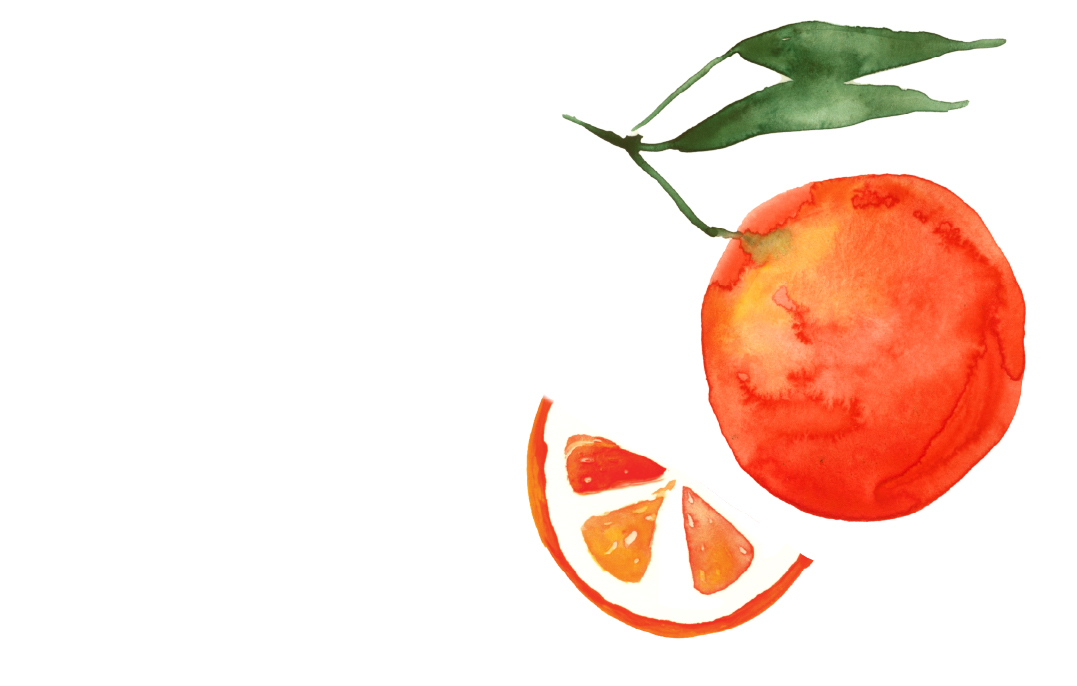
PICK YOUR CITRUS
The squeeze test
Want to make sure your citrus will taste good? You usually need to gently press on its skin to feel whether it’s ripe. Fruit should have a little give (not too much) to show it’s ready to eat. If it’s rock hard, let it stay on the shelf and continue to ripen.
The smell test
Citrus should also give off a little aroma. Without much scent, it will not have much flavor either. If it smells like a fruity cocktail, it’s probably overripe.
Peel or no peel?
Rich in phytochemicals and antioxidants, the outer layers of fruits and vegetables are often the most nutritious part, and citrus is no exception. The peels of lemons, limes, grapefruits, and oranges are edible, but they can be tough to digest and may even make you feel a little bloated. Plus, peels impact the taste of juices and smoothies, usually giving a more sour taste. If you want some of the benefits from the peel without compromising on flavor or upsetting your stomach, try peeling half of your fruit before juicing it. As your body becomes more accustomed to it, you may be able to add in more peel.
Storage
Generally, you can leave citrus on the counter for up to a week. Its thick skin will help preserve it, and citrus tends to yield more juice at room temperature.
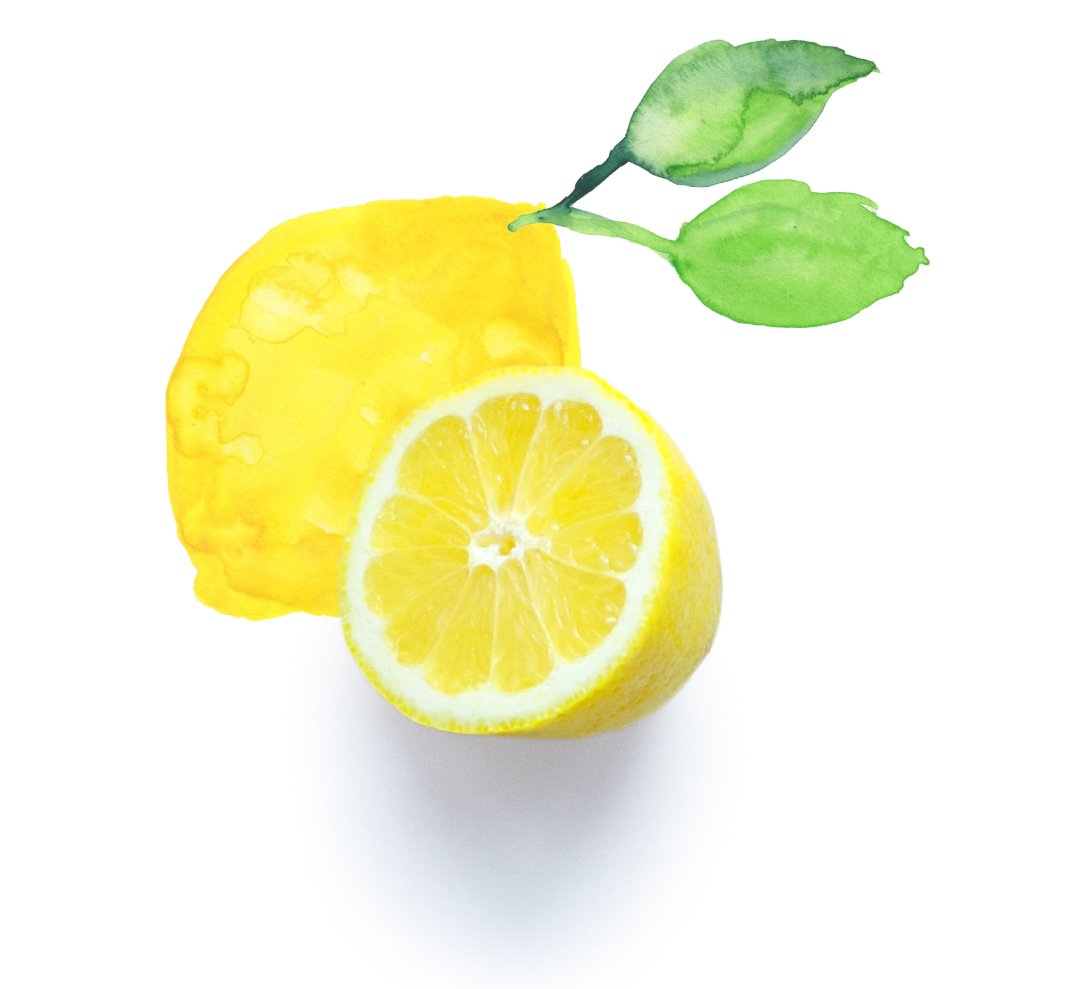
THE SECRET SCIENCE OF
LEMON JUICE
Lemon juice is a not-so-secret ingredient that gets added to homemade jams, and it’s the same reason why lemon juice can help preserve your juices: It has a high acidic content, which means it acts as a natural source of citric acid. A synthetic version of citric acid is used as an additive in food, cleaning agents, and nutritional supplements for its preserving powers. But you can use real lemon juice, which reacts with the other fruits to help the colors and flavors of your juice last longer.
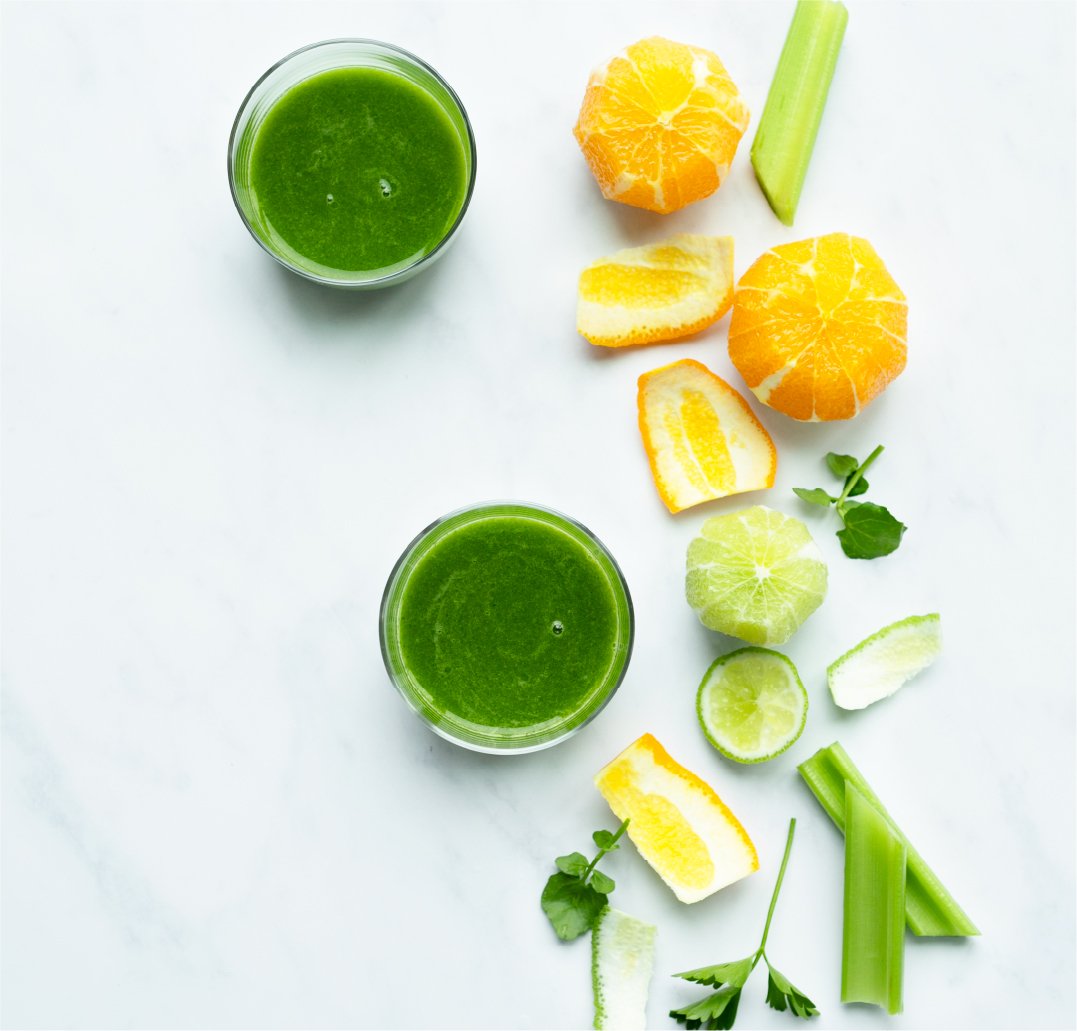
WELLNESS SHOTS
Nothing can kickstart your day and fill you with energy like a shot of citrus in the morning. These shots can boost your day with a range of good-for-you ingredients.
Wellness, or immunity shots, are small, using about 2-4 ounces of liquid, and mix well with other fruits, vegetables, herbs, or spices. Make a big batch and then sip and serve them all week.
Citrus makes the perfect base for a wellness shot. Mix oranges and lemons, grapefruit and lime, or go for sweet tangerine with spicy ginger. You can adapt the flavor for your palate.
- Go spicy with cayenne, ginger, or jalapeño.
- Warm it up with turmeric, cinnamon, or cardamom.
- Sweeten your shot with orange, tangerine, or honey.
- Go sour with more lime, grapefruit, or kumquat.
TRY THESE WELLNESS SHOT COMBINATIONS
- Lemon, Ginger, Cayenne
- Lemon, Carrot, Turmeric, Black Pepper
- Lime, Pineapple, Ginger
- Grapefruit, Orange, Cayenne
- Celery, Apple, Lime, Jalapeño
- Blood Orange, Carrot, Lime, Ginger
CITRUS VARIETIES
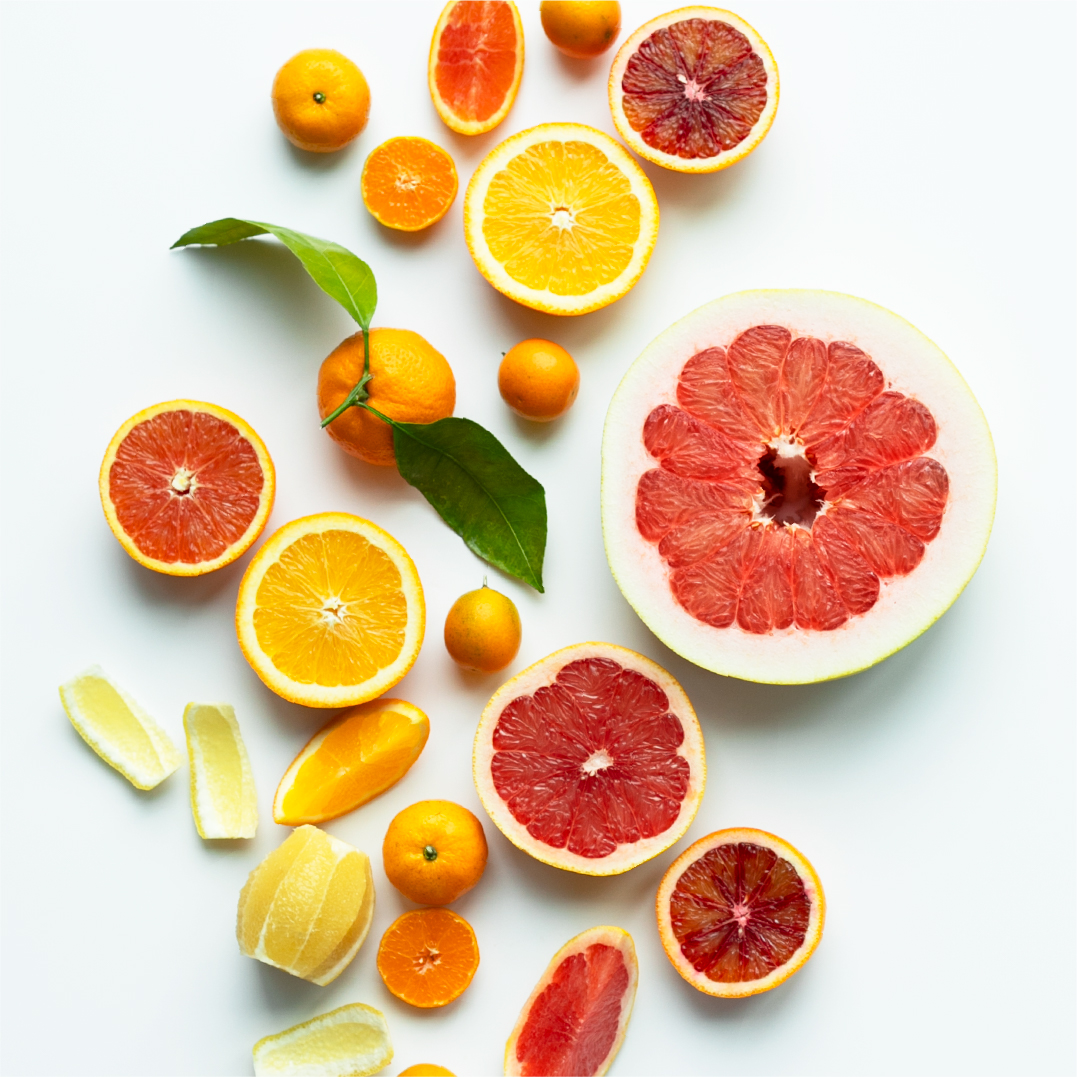
The Classics
Oranges, lemons, limes, and grapefruits are what come to mind when you think of citrus. They offer a sweet, bitter, or sour punch, depending on the variety. The rind or zest of these fruits abounds with natural oils, offering aromatics that can boost flavor and nutrition when cooking or making juices and smoothies.
LEMON & LIME
If you buy lemons at the store without a specific label, they are one of two varieties—Eureka or Lisbon. They taste indistinguishable, but Eurekas have a thick skin, while Lisbon varieties tend to have a thinner skin. The most common variety of lime found at the grocery store is called a Persian lime, and they are usually seedless with light-green skin and pulp.
GRAPEFRUIT
The most common type of grapefruits are ruby red or pink varieties, which make a fantastic single-ingredient juice with just a touch of bitterness. If you want to opt for something different, try an Oro Blanco or “white gold” variety, which is a cross between a pomelo and a white grapefruit, with a lemon-yellow flesh and sweet flavor with virtually no bitterness.

Sweet & Tangy
Can you tell the difference between a mandarin and a tangerine? Blood oranges sound bitter but are actually quite sweet. Blood oranges and Cara Caras grow primarily in California and might be more available this season.
MANDARIN & TANGERINE
These small, sweet oranges are very closely related. Tangerines are a type of mandarin, and mandarins are the oldest type of orange. You can spot a mandarin because they have flat ends, meaning they will sit still on a counter. Tangerines have a slightly thinner skin and tend to be a brighter hue of orange and a little larger than a mandarin.
BLOOD ORANGE & CARA CARA
This year, early estimates of the impact from hurricanes in Florida, the largest citrus producer in the country, may result in lower production than usual, making California-grown blood oranges and Cara Caras more prominent. Cara Caras are a relative of blood orange and also have crimson-colored flesh. Both types of oranges are sweet and add a little something special to a juice or smoothie.
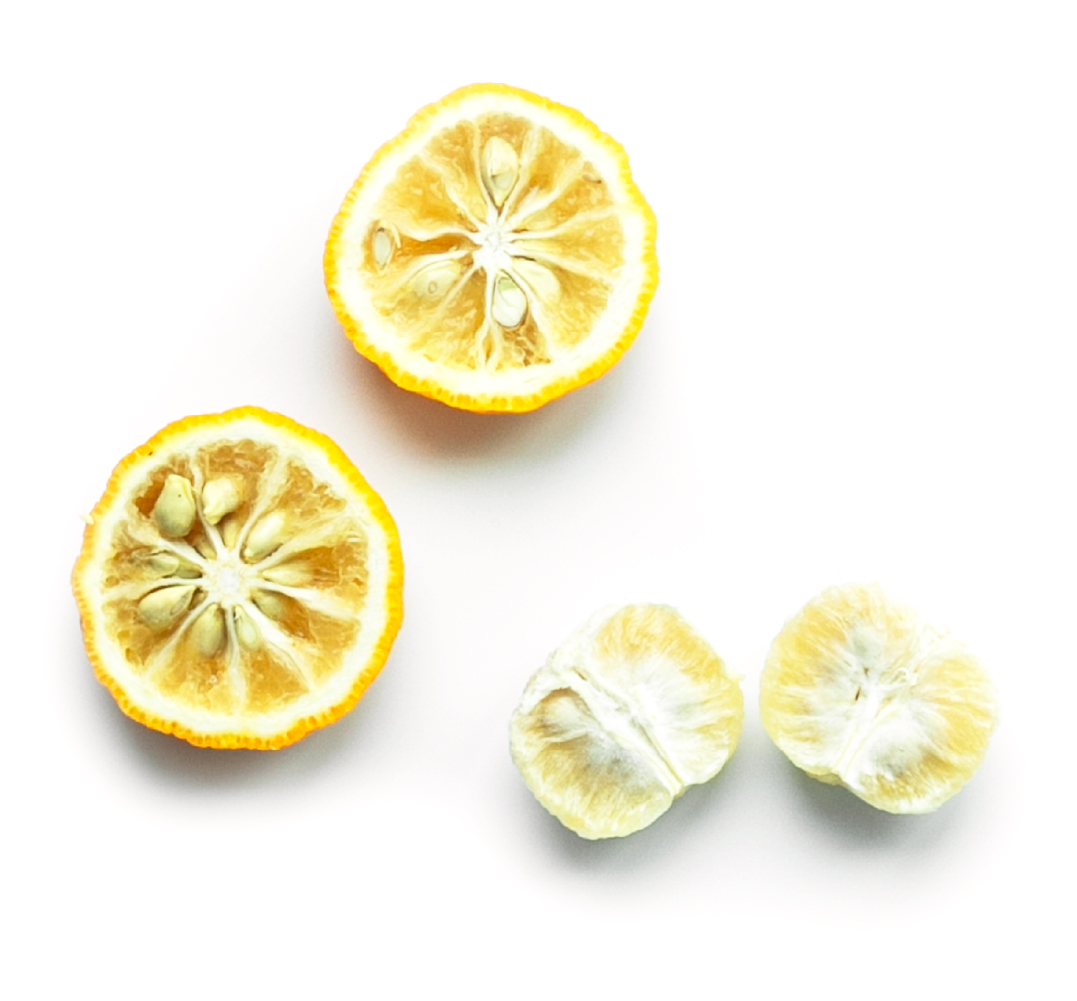
Exotic & Alluring
Want to try something totally outside your citrus comfort zone this season? Check out these interesting varieties.
YUZU
This popular fruit originates from Japan and looks like a large lemon. It’s aromatic and tastes like a fusion of lemon and lime with hints of tart, bitter flavor and floral sweetness. Though restrictions are in place to import this fruit from Asia, California farmers have been growing it for years, helping it gain popularity in the U.S. You can find it fresh in select health food stores or Asian markets.
BUDDHA’S HAND
The winner for the most unusual-looking citrus has to be this delightful citron. Buddha’s hand is a type of lemon that gets its name from the fact that it looks like a bunch of long yellow fingers. You don’t eat the flesh of this fruit, but the rind offers a very zesty flavor to desserts and drinks.
UGLI FRUIT
This hybrid is a combination of a grapefruit, orange, and tangerine. Wrinkles, splotches, and blemishes are part of what makes this fruit so “ugly.” It has a rough greenish-yellow skin, which is easy to peel. But don’t let looks detract you; this fruit has a sweet, slightly tangy flavor, which is also milder than a grapefruit. It’s great eaten fresh in a fruit salad, or you can juice or blend it.
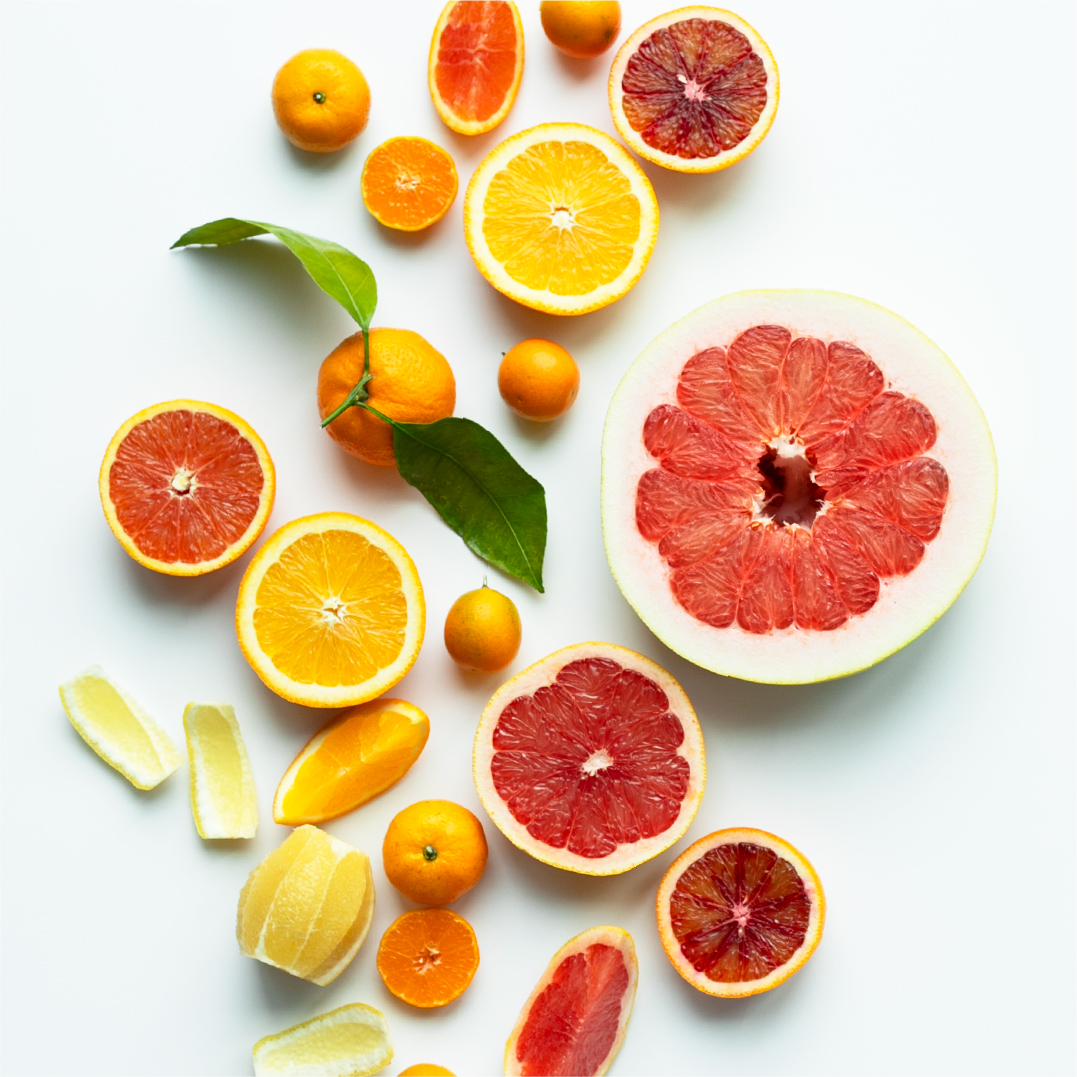
Zesty & Bold
Both key limes and Meyer lemons offer distinct flavors outside of their traditional counterparts with a bit more floral notes. When you want a more distinctive lemon or lime flavor, look for these varieties to help punch up your recipe.
POMELO
Pomelos have a sweet, more mild flavor than grapefruit with a thick green or yellow rind, which can be more challenging to peel. They are the largest citrus fruit, often weighing between 2 to 4 pounds. They pair well with mango or lemon in a juice recipe.
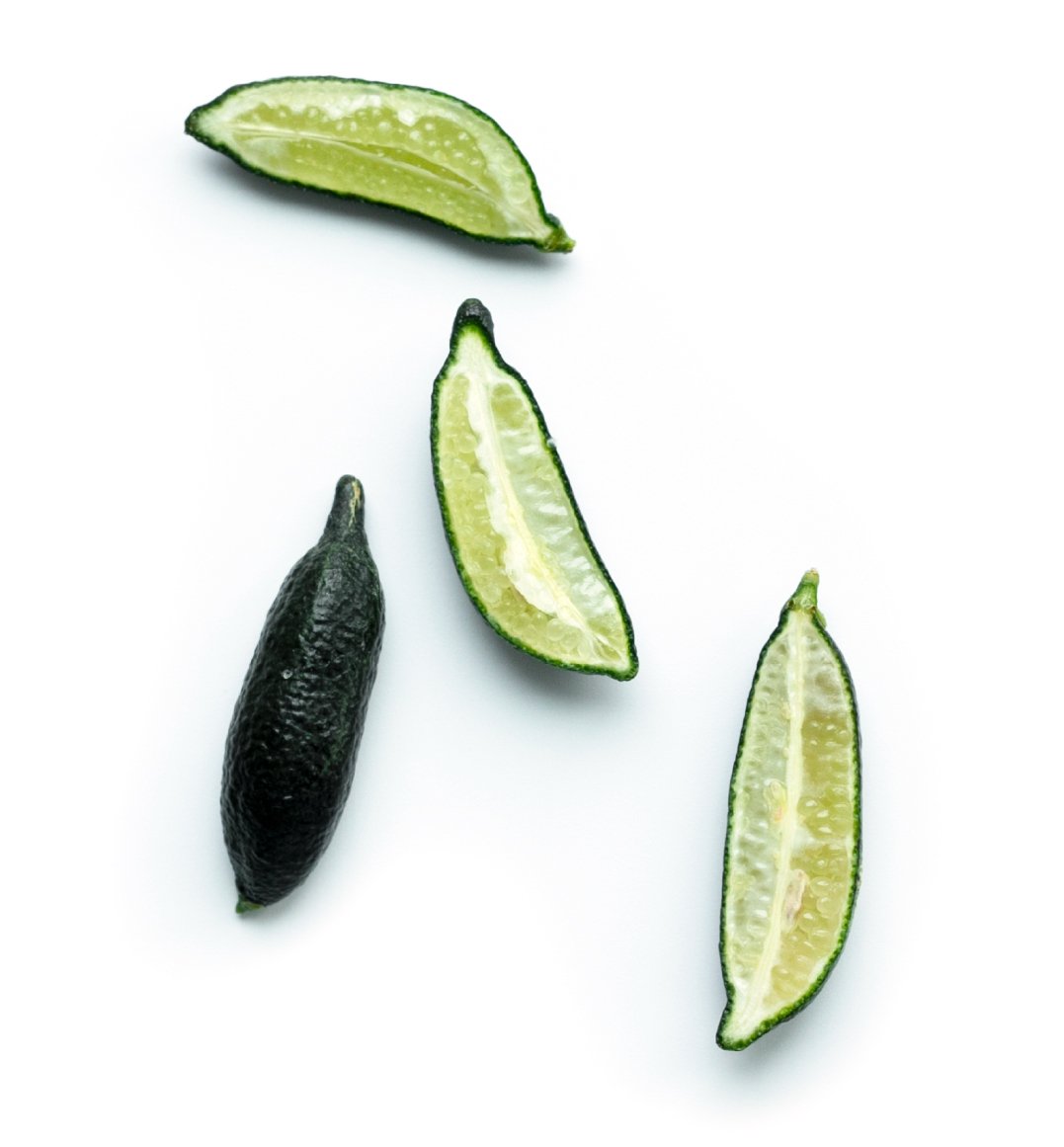
Small & Mighty
Sometimes, the tiniest of fruits hold the most flavor. Also known as cuties, clementines are a sweet, easy-to-peel fruit that make the perfect snack. Finger limes are petite and known as citrus caviar because when you squeeze their pulp, it looks like caviar.
KUMQUAT
Unlike other citrus, kumquat can be eaten whole, and yes, that includes the peel. Its oval shape makes it look like a mix between a small orange and a cherry tomato. It has a delicious flavor that’s both sweet and tart. Kumquats can be juiced or blended with no need to remove the peel or the seeds.
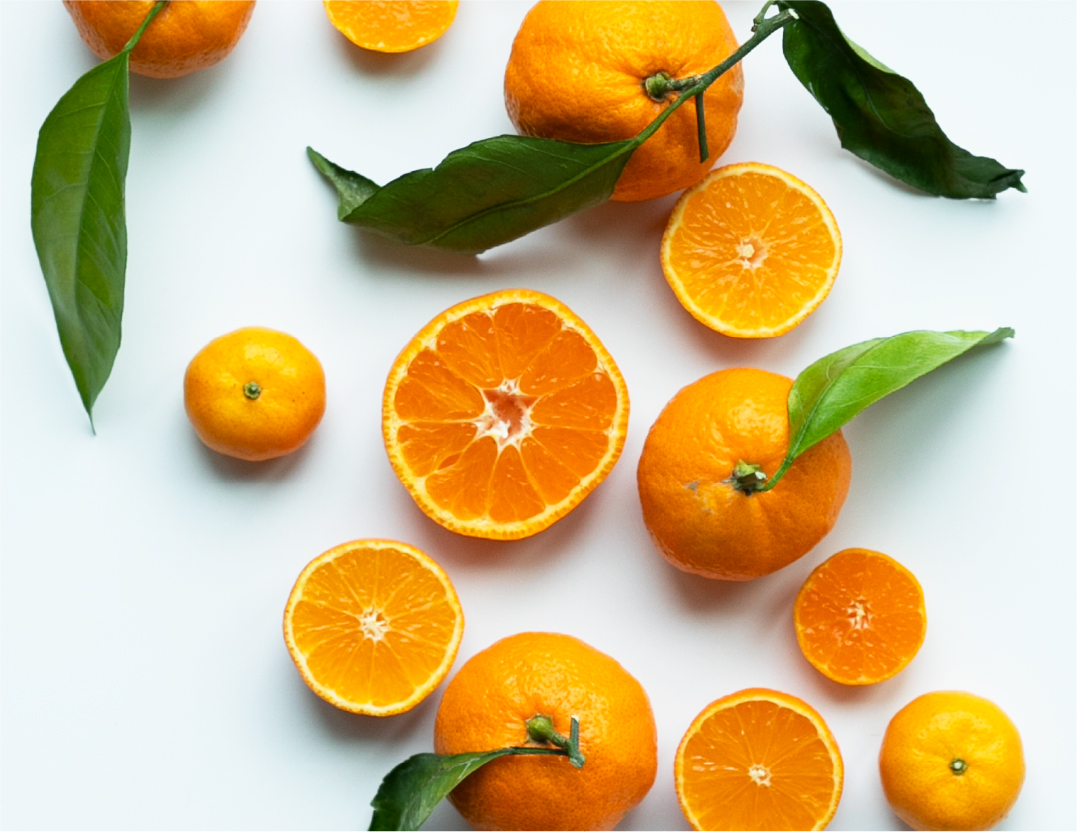
Best For Juicing
Bursting with vitamin C, oranges are great to consume when you might be feeling SAD (seasonal affective disorder). Research shows that extra vitamin C can help improve your mood and work to alleviate symptoms of depression or winter blues.
NAVEL VS. VALENCIA ORANGE
These oranges are probably the most common variety and easy to find in stores. They don’t have seeds, which makes them great for juicing and eating. They are also very easy to peel, making them a great choice for juicing or blending prep. Thanks to their large size, they produce high yields for juice. Navel oranges have a sweet flavor, but their peels contain limonene, a terpene with antioxidant and anti-inflammatory activity, that can make a juice taste bitter, especially if you let it sit for a few hours or days.
Valencias get their name from the region in Spain where they originate from. This type of orange is the gold standard in making orange juice. Most commercially available orange juices use this variety because they are available for a long stretch of the year and they are perfectly sweet. They also tend to have less seeds, which is great for juicing and getting maximum yield.
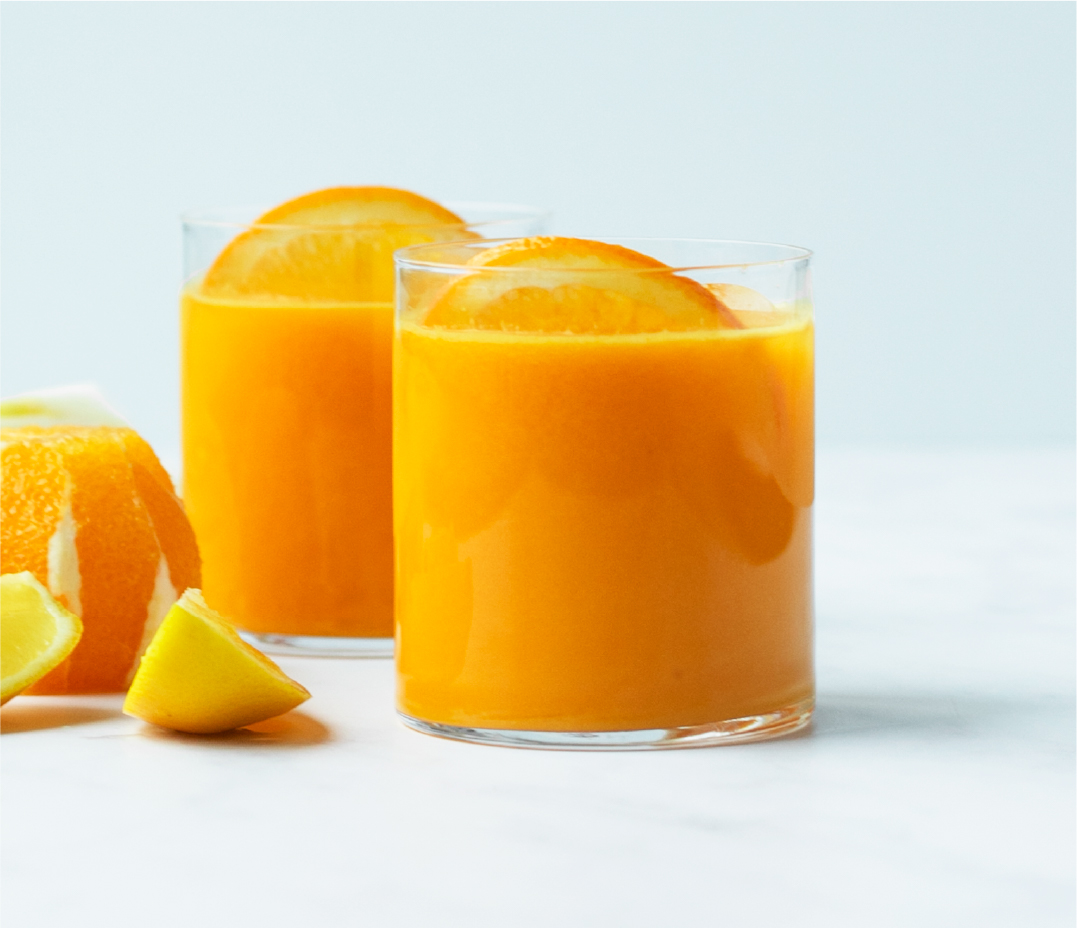
Health Benefits
It’s no surprise that citrus fruits are an excellent source of vitamin C, a nutrient that bolsters immunity and works to help keep your skin looking smooth and healthy. These delicious fruits also contain B vitamins, potassium, phosphorus, magnesium, and copper. Additionally, they are high in phytonutrients such as flavonoids, alkaloids, coumarins, limonoids, carotenoids, phenol acids, and essential oils. Research shows these nutrients have anti-oxidative, anti-inflammatory, anti-cancer properties along with cardiovascular and neuroprotective effects.
People often think of fruit as “forbidden” for those with diabetes, but research suggests that vitamin C found in citrus is linked to improved blood glucose levels in people managing type 2 diabetes. When making fresh juice, combining citrus with non-starchy vegetables such as cabbage, kale, or celery can help maintain balanced blood sugar, along with pairing juice with a healthy protein or fat. The polyphenols found specifically in lemon peel can help minimize insulin resistance and suppress the accumulation of fat in the abdomen.
Eating citrus fruit is also good for the heart and can help prevent cardiovascular disease. One study found that people who ate higher amounts of citrus had lower rates of heart disease and stroke. Eating more flavonoid-rich fruits can help reduce blood pressure, while improving blood flow and helping improve circulation.
COMMUNITY SPOTLIGHT
FRUIT HUNTERS
@FRUITHUNTERSCO
The Fruit Hunters is a team of fruit enthusiasts in Miami who are dedicated to making rare, tropical fruit accessible to everyone.
Q: What is Fruit Hunters and how did you get started?
A:Fruit Hunters is all about celebrating the unique, exotic, and tropical fruits that many people don’t even know exist. Based on our permaculture farm in the lush Redlands of Homestead, Florida, we grow and source fruit using natural, organic practices.
But our mission goes beyond just farming; it’s about connection. We wanted to bridge the gap between people in northern states and the vibrant, nutritious fruits that are nearly impossible to find fresh elsewhere. It all started with our love for fruit and the desire to share these treasures with others. Fruit Hunters is as much about the joy of discovery as it is about sustainability and quality.
Q: What types of citrus fruits do you grow? What is the most popular?
A:We grow some truly unique citrus varieties, including Australian finger limes (also known as caviar limes), calamondin, kaffir lime, and a rare citrus relative called wampee. Without a doubt, caviar limes are our most popular. They’re not just fun and interactive—with their little pearls bursting like citrus caviar—but they’re also prized for their medicinal benefits. It’s incredible to see people light up when they experience them for the first time.
Q: What does the process from planting to harvesting look like?
A:Our journey from planting to harvest reflects the patience and precision required for nurturing nature. We primarily propagate trees through air layering, as growing from seed can take up to 15 years to produce fruit—a long time to wait! Once planted, we invest deeply in organic care, ensuring the trees thrive in harmony with the land. When it’s time to harvest, especially with caviar limes, the process can be challenging. Their thorny trees require us to use thick rose bush gloves for protection as we pick the tiny fruits, but it’s worth every effort when we see the quality of what we’ve grown.
Q: What type of sustainable or organic farming methods do you use?
A:Sustainability is at the heart of everything we do. We hand-weed when necessary and manage weeds using mulch and cover crops like fenugreek and red clover, which also enrich the soil. For fertilization, we use natural inputs such as kelp, rock dust, and Epsom salts to maintain balance. Pest control is equally thoughtful. We use a gentle clove oil and soap solution applied early in the morning or at dusk, ensuring minimal impact on beneficial insects. Everything we do is about working with nature, not against it.
Q: What challenges do you face in maintaining your farm and fruits?
A:Farming in South Florida isn’t without its challenges! Hurricanes are always a looming threat, and pests can be relentless. To combat this, we keep our trees short and well-manicured, which makes them more resilient to storms. For thorny fruits like caviar limes, harvesting is a labor of love, requiring patience and protection, but it’s all part of the journey. These challenges keep us on our toes and inspire us to innovate constantly.
Q: What is an unexpected use of citrus?
A:We’ve been having so much fun creating something called “frushi”—fruit sushi! Imagine a delicate sushi roll topped with the citrusy pop of caviar lime pearls. It’s an explosion of flavor and texture. We’re launching a new distribution company, Frushi Miami, to bring this exciting creation to more people. On the simpler side, we also love squeezing calamondin into fresh coconut water for an incredibly refreshing, zesty drink.
Q: What are your favorite citrus fruits for juicing? And what other fruits and veggies do you like to pair them with?
A:Calamondin is a favorite for juicing—its tangy, almost floral flavor adds such vibrancy. We also enjoy pairing citrus with tropical fruits like mango or pineapple for something sweet, or adding greens like kale for a refreshing, nutrient-packed juice. It’s all about experimenting and letting the natural flavors shine.
Q: What does the future look like for you?
A:The future is bursting with possibility! Right now, we’re preparing to launch Frushi Miami, our new venture that combines our love for fruit and creativity in the kitchen. Our goal is to start local, creating a buzz in South Florida, and then expand nationally and even globally. We’re also looking to grow our farm, with plans to add more citrus varieties like grapefruit and Cara Cara oranges. Everything we do is rooted in the goal of creating something meaningful, sustainable, and delicious for future generations to enjoy.
- Choosing a selection results in a full page refresh.
- Press the space key then arrow keys to make a selection.

